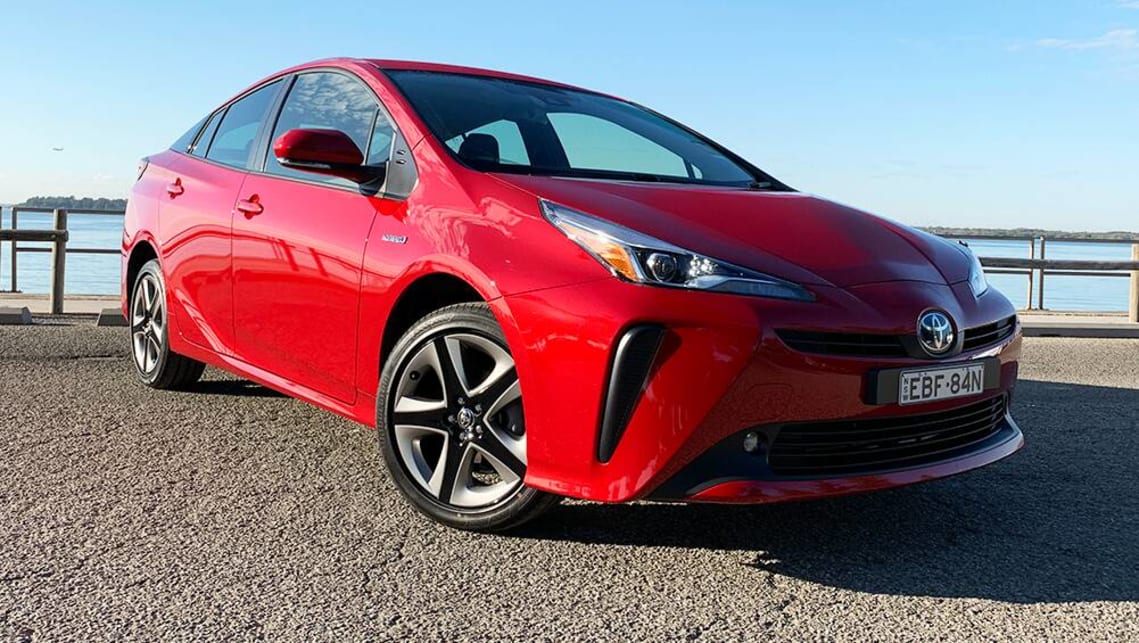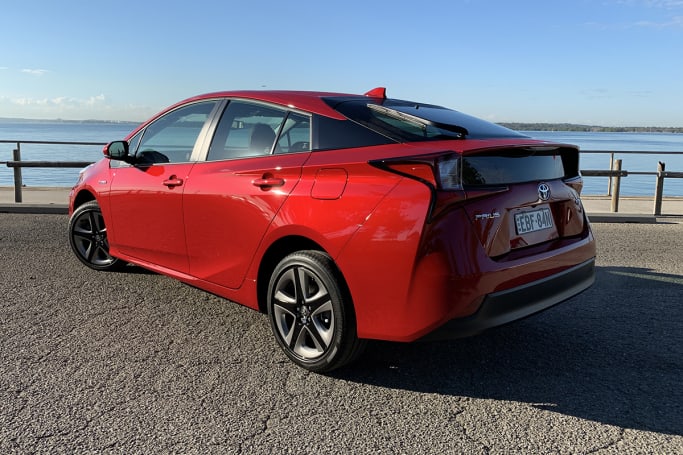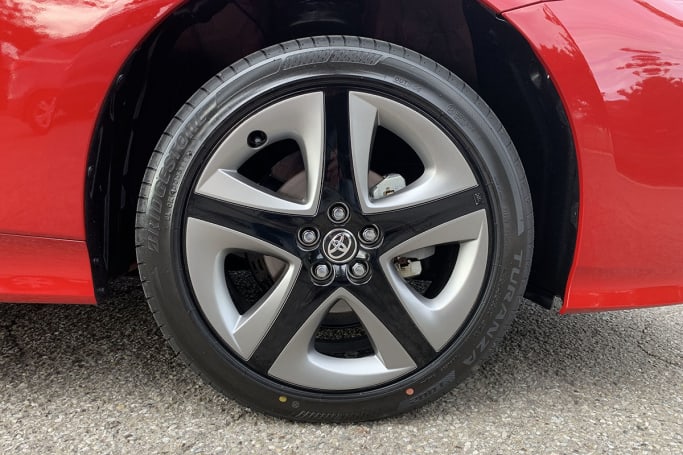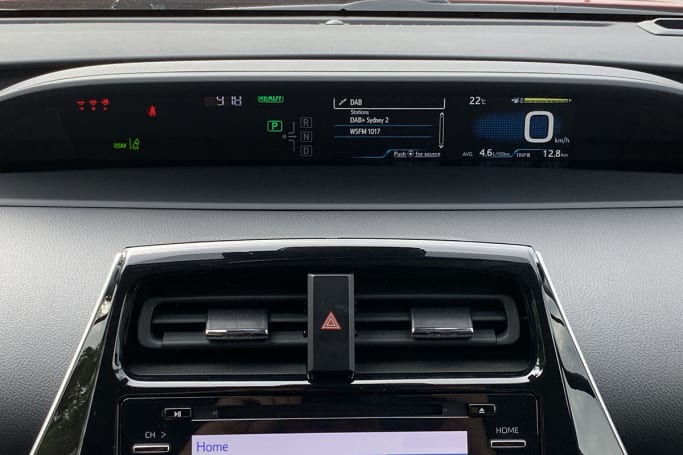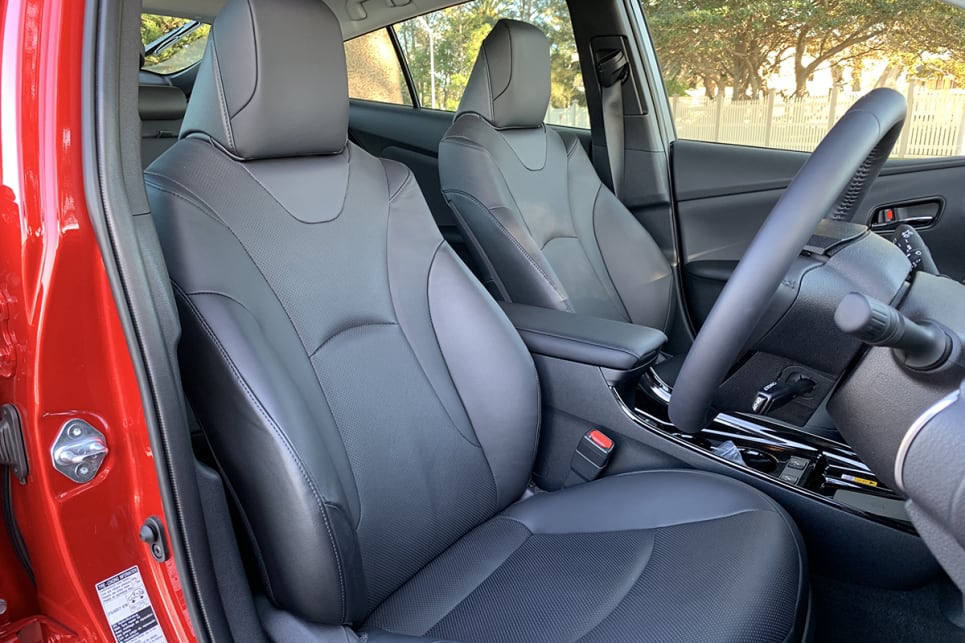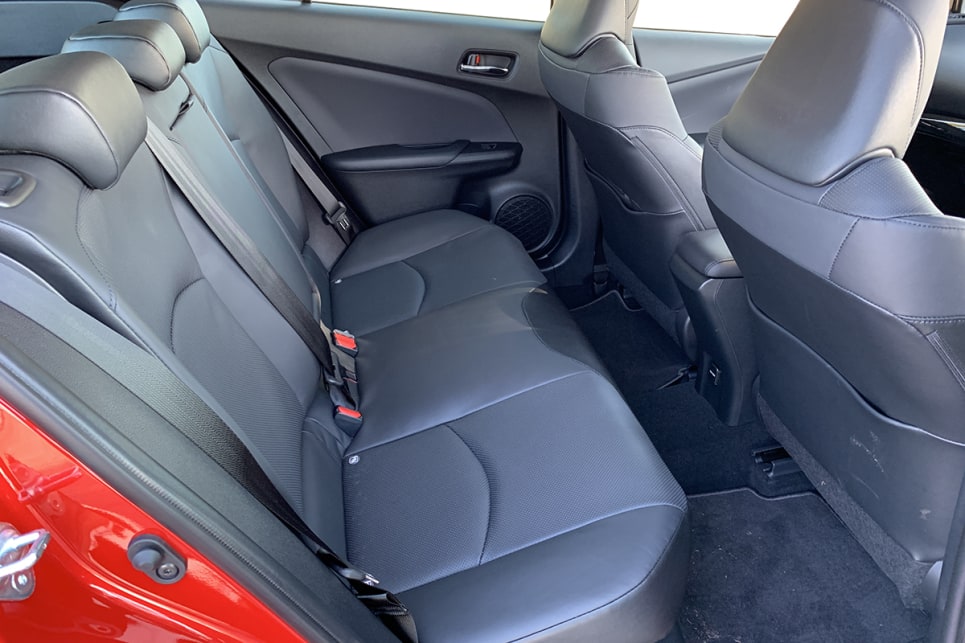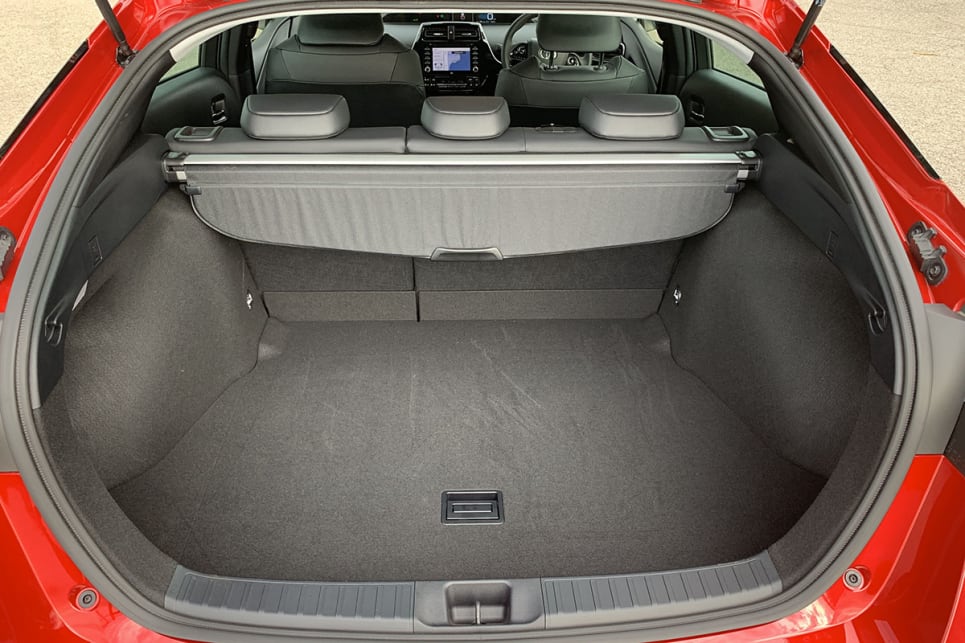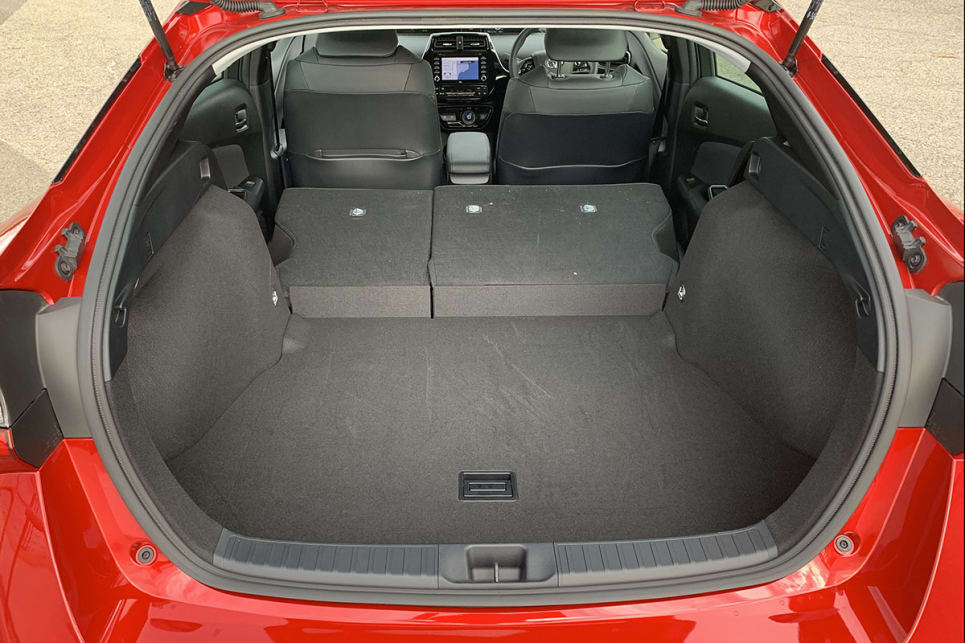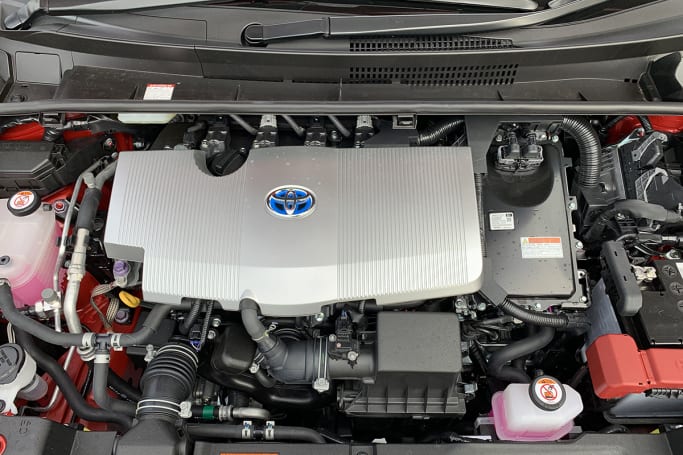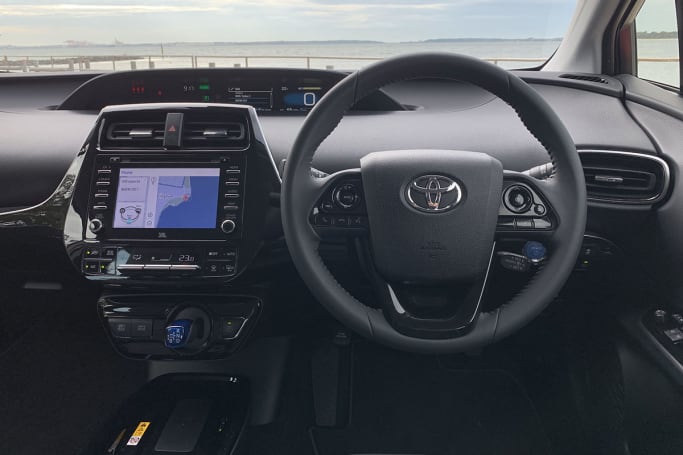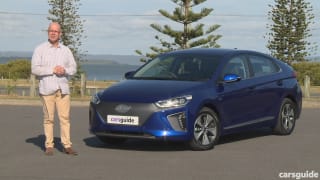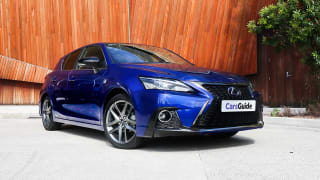The 2019 Prius update is available in two specs - entry level for $36,590 and this i-Tech for a stout $44,050. For that outlay you score 17-inch alloys, a 10-speaker JBL-branded stereo, keyless entry and start, Qi wireless charging pad, auto LED headlights, auto wipers, reversing camera, electric everything (except the tailgate), fake leather trim, climate control, head-up display, sat nav and a tyre-repair kit.

Toyota's worse-than-the-final-season-of-Game-of-Thrones multimedia system soliders on. It's hard to use, terrible to look at and, even with the Kluger-style shortcut buttons, leaves me screaming, alternately, for a hug and for Apple CarPlay/Android Auto.
There's just no excuse for a system this bad in the modern world. Toyota Australia's stubborness is admirable, in a way. The sound is really good, though, and it comes with DAB, which is fine if you can work out how to find the station you want in the confusing user interface.


